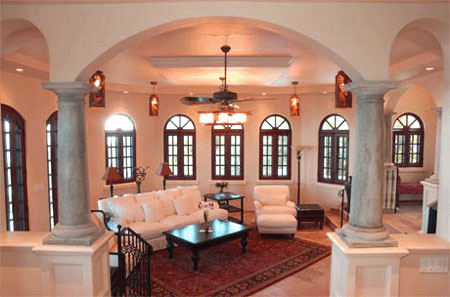
Furniture proportion is a very important element of a good home staging design. A proper sense of proportion must be maintained throughout the residence, in order to create a pleasing aesthetic, but the size and visual weight of furniture is perhaps the worst offender in most homes that I stage. By correcting the sense of proportion in the rooms, the stager can improve the overall balance, tranquility, perceived size and actual functionality of any space within the residence.
Remember, proportion is relative to the size and usage of each space. It should also be continuous throughout the home. So many people use pieces of furniture which fight one another, room to room, and some particularly clueless decors feature furniture of different proportions within the same room. These problems need to be addressed and resolved before marketing any property for sale or rental.
This narrative sets clearly defined rules for choosing the proportion of your furniture when staging a home for sale.
Furniture Proportion Guidelines
Proportion means the actual size and visual weight of an object in relation to the room it is in and the other items in the décor. Proportion is never an absolute criterion, but instead is subjective and directly dependent upon the surrounding environment. Sometimes, in order to correct proportion, you must remove or replace an item in the room, while other times, proportion can be optimized by changing the surroundings in which an offending item currently occupies. In essence, this means moving the item somewhere else.
Proper proportion can get a bit complicated, but that’s why home stagers are expertly trained professionals. Of all design elements, the ability to create perfect proportion is one skill that few amateur stagers possess.
Proportion Conundrums
In 95% of the homes I stage, the proportion of the items is all wrong and virtually always leans towards too large and visually heavy. Most families love to pack tons of furniture and accessories into every room and really feel strange if a wall is not occupied with some sort of bulky item.
People figure: “I have the space, so I have to put something there”. This is a huge mistake.
When I stage, I almost always remove lots of furnishings from a room, since this immediately brings the remaining items back into balance. For problematic items, such as oversized furniture, simply decreasing the visual weight by adding a lighter and more neutral colored slipcover can help.
If the issue remains, then the obvious answer is to remove the offending furniture item altogether. Americans, in general, love everything large and their homes are mostly spacious, yet completely crowded with copious amounts of stuff. This is all very unappealing when staging to sell. In order to stage effectively, all this stuff has to go, so that the potential buyers can concentrate on the home itself, making a fast and profitable offer likely.
Perfect Furniture Proportion
In order to create the ideal environment, furnishing proportions must be carefully weighed against the actual size of the room or outdoor space. Research has shown conclusively that proportion in the human anatomy is what differentiates the varying degrees of attractiveness. Well, the same holds true for interior design. If it is balanced and in sync with itself, the overall impression will be wonderful. If not, then your home will look less desirable to prospective buyers.
To learn more about optimizing the proportion in your home décor, talk to a qualified home staging professional today.




